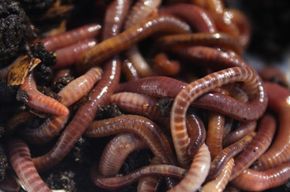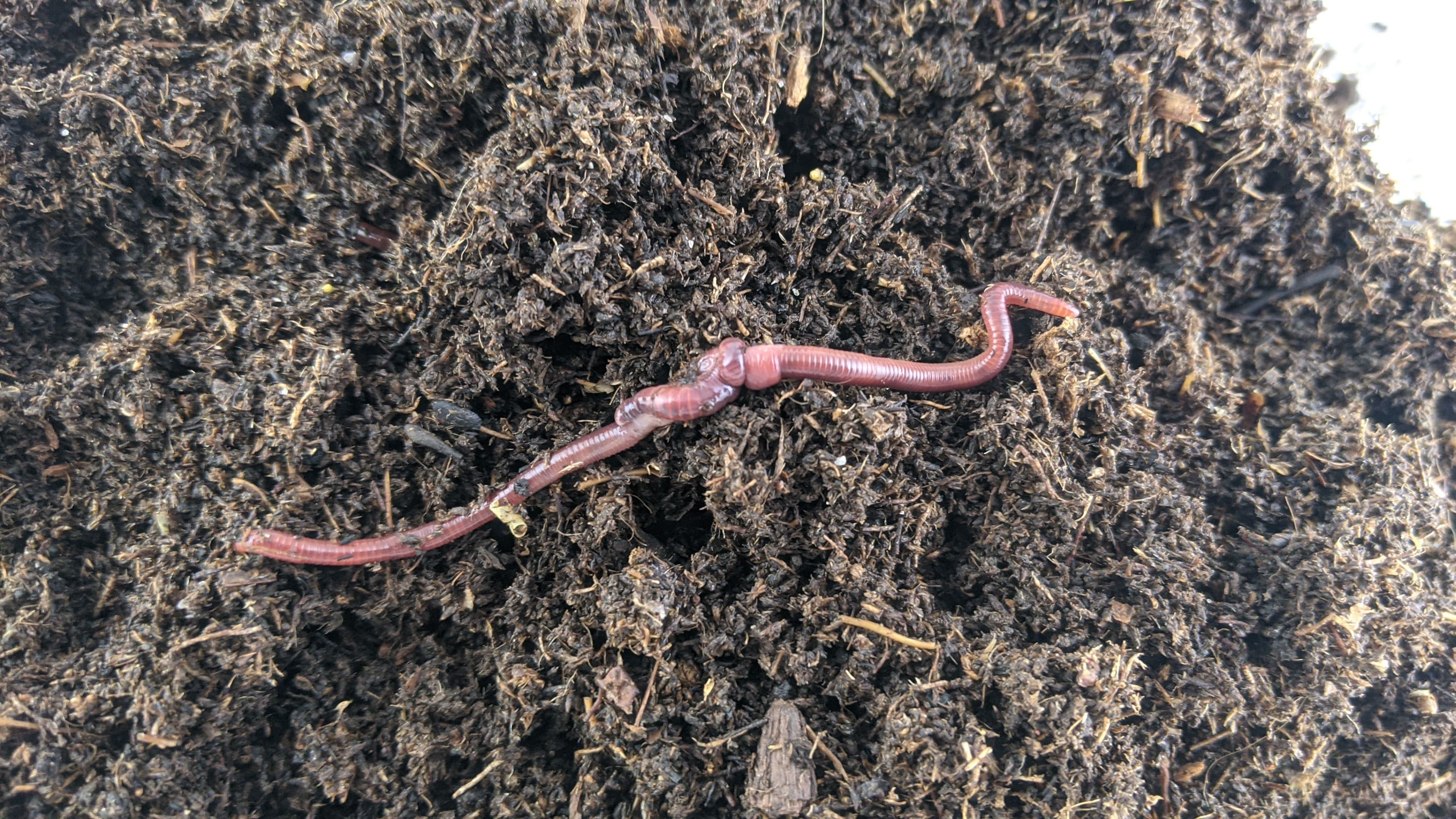Checking Out the Devices of Red Wiggler Composting: A Comprehensive Overview to the Refine and Its Favorable Influence On Lasting Gardening Practices
The elaborate systems of red wiggler composting, using the special physiology of Eisenia fetida, offer an engaging method for boosting lasting horticulture methods. This procedure not just transforms organic waste into nutrient-dense vermicompost but also fosters a healthier dirt ecosystem through boosted oygenation and microbial task. As metropolitan gardening gains traction, understanding the nuances of this composting method comes to be significantly pertinent. The trip into its myriad advantages and finest methods is just starting, prompting a closer exam of just how this method can reshape our horticulture techniques.
Recognizing Red Wigglers
Red wigglers, clinically known as Eisenia fetida, are a varieties of earthworm highly regarded for their performance in composting organic waste. These worms grow in nutrient-rich atmospheres, specifically in rotting natural matter, making them ideal for vermicomposting systems - Red Wiggler Composting. Defined by their reddish-brown coloration and segmented bodies, red wigglers are smaller sized than typical earthworms, commonly determining in between three to 4 inches in size
Their distinct physical characteristics boost their composting capabilities; for example, they have a high reproductive rate, enabling populaces to multiply swiftly under suitable conditions. Red wigglers eat organic material, simplifying via their digestion systems, which causes nutrient-rich castings that act as an exceptional natural fertilizer. Their starved cravings allows them to process big quantities of food waste effectively, substantially minimizing land fill contributions.
In enhancement to their composting prowess, red wigglers play an essential function in dirt health and wellness. Red Wiggler Composting. They aerate the soil and facilitate the decay of natural issue, more enriching the soil environment. Recognizing the features and ecological benefits of red wigglers is important for anybody seeking to carry out lasting horticulture techniques via reliable composting approaches
The Composting Refine
The composting procedure entails damaging down natural products right into nutrient-rich garden compost, a task that red wigglers stand out at because of their specialized digestion systems. These worms take in food scraps, lawn waste, and other organic matter, changing them right into useful garden compost with a collection of organic and chemical processes.
Initially, the natural issue is combined with bedding products such as shredded paper or dried out fallen leaves, producing an optimal environment for the worms. As the red wigglers consume this blend, they damage it down with their gut, where microorganisms better decay the product. This process generates warmth, advertising microbial activity, which accelerates disintegration.

Advantages of Red Wiggler Composting
Eco-conscious people and numerous garden enthusiasts acknowledge the numerous benefits of red wiggler composting, making it a preferred choice for reliable waste management. Among the primary advantages is its capacity to considerably lower organic waste in garbage dumps - Red Wiggler Composting. Red wigglers efficiently break down cooking area scraps and other naturally degradable products, changing them into nutrient-rich vermicompost that enhances dirt health
Additionally, red wiggler composting boosts soil structure and fertility. The resulting vermicompost is including advantageous microbes, which advertise plant growth and enhance nutrient retention. This all-natural plant food not just supports sustainable horticulture techniques but likewise lowers dependence on chemical fertilizers, promoting a healthier environment.
In addition, red wiggler composting is a space-efficient method, making it perfect for metropolitan garden enthusiasts with minimal room. The process can be conducted inside your home or outdoors, enabling year-round composting despite environment problems. Red wigglers are low-maintenance microorganisms that call for minimal care, making them easily accessible for newbie garden enthusiasts.
Basically, the advantages my sources of red wiggler composting prolong beyond waste reduction; they contribute to healthier soils, sustainable horticulture techniques, and ecological stewardship, placing it as a useful method in modern horticulture.
Best Practices for Composting
For successful red wiggler composting, sticking to finest practices is vital to optimize effectiveness and guarantee a productive setting for these worms. First, it is very important to keep a proper carbon-to-nitrogen ratio, preferably around 30:1. This balance advertises ideal decomposition and improves the worms' health. Include a mix of eco-friendly products, such as vegetable scraps, and brownish materials like shredded paper or cardboard.
Following, display moisture degrees, going for a moist, sponge-like uniformity. Overly damp problems can result in anaerobic disintegration, while excessive dryness might hinder worm activity. In addition, ensure appropriate oygenation by turning the compost on a regular basis, which helps stop compaction and permits for sufficient oxygen circulation.
Temperature level is another essential aspect. Keep a range of 55 ° F to 77 ° F(13 ° C to 25 ° C) to promote worm activity and microbial development. Ultimately, avoid introducing meat, dairy these details products, and oily foods, as these can draw in parasites and create odors.
Enhancing Sustainable Horticulture
Lasting horticulture embodies an alternative technique that balances eco-friendly concepts with sensible horticulture strategies. By including approaches such as red wiggler composting, garden enthusiasts can significantly enhance their practices, fostering a more resilient ecosystem. Red wigglers, renowned for their efficient decomposition capabilities, convert natural waste right into nutrient-rich garden compost, click consequently enhancing the soil without relying upon chemical fertilizers.
Carrying out sustainable gardening techniques, such as plant turning, buddy planting, and mulching, further enhances the advantages of composting. These methods not only improve soil framework and fertility however likewise promote biodiversity, attracting advantageous insects and microorganisms that add to plant health. Using native plants can reduce water intake and lessen maintenance, aligning with water preservation efforts.

Conclusion
Finally, red wiggler composting represents a crucial method for improving lasting gardening methods. The reliable food digestion of organic waste by Eisenia fetida not only generates nutrient-rich vermicompost but likewise cultivates improved soil health and wellness and framework. By advertising aerobic decay, this strategy minimizes odors and waste while minimizing dependence on chemical plant foods. Ultimately, the adoption of red wiggler composting can dramatically add to environmentally friendly gardening, benefitting both metropolitan and amateur garden enthusiasts in their cultivation efforts.
The detailed devices of red wiggler composting, making use of the unique physiology of Eisenia fetida, present an engaging method for boosting lasting horticulture methods. Understanding the qualities and environmental benefits of red wigglers is important for anybody looking to execute sustainable horticulture techniques via efficient composting techniques.

In conclusion, red wiggler composting stands for an important method for boosting sustainable horticulture methods. Ultimately, the fostering of red wiggler composting can considerably add to environmentally friendly horticulture, benefitting both urban and newbie gardeners in their farming efforts.